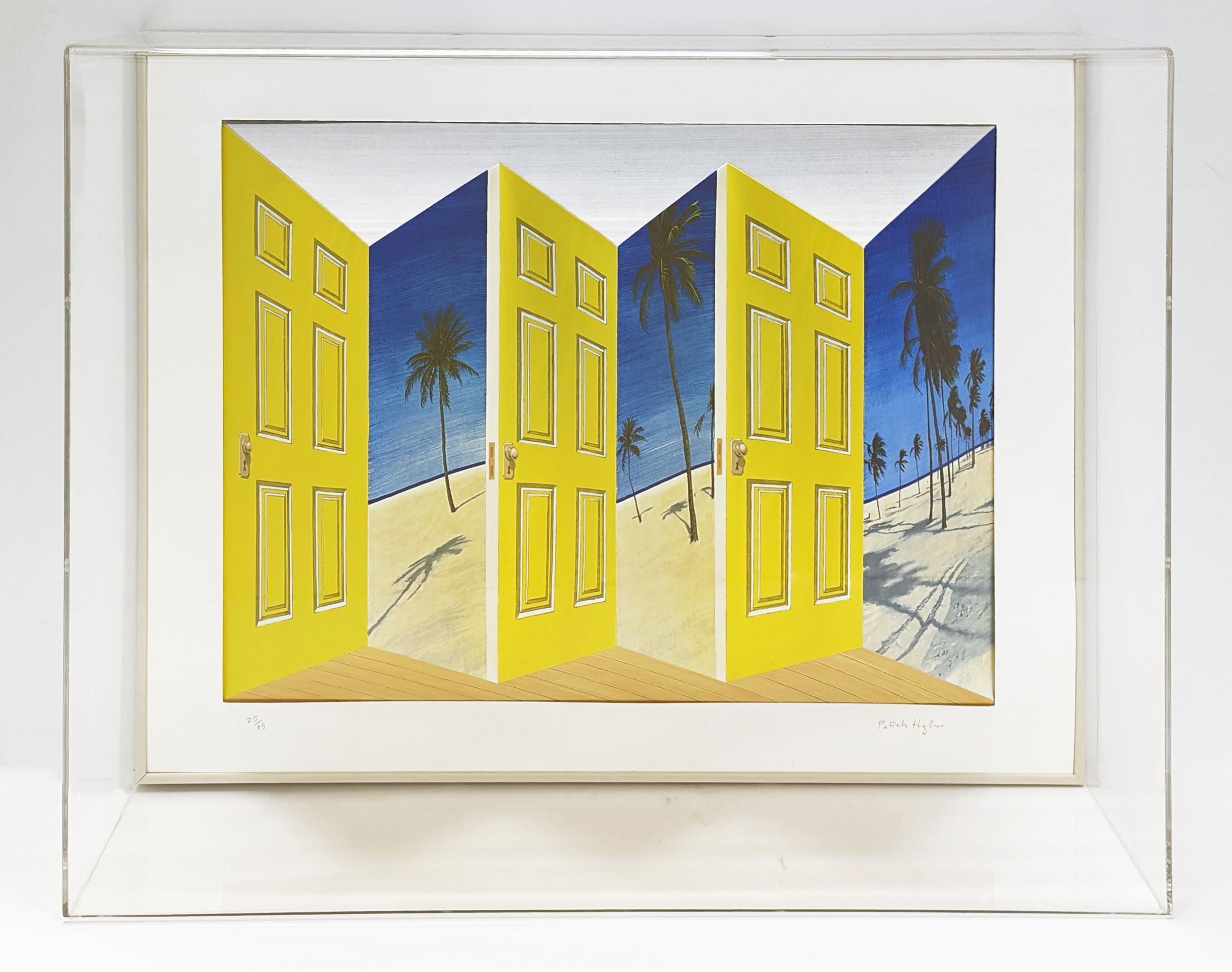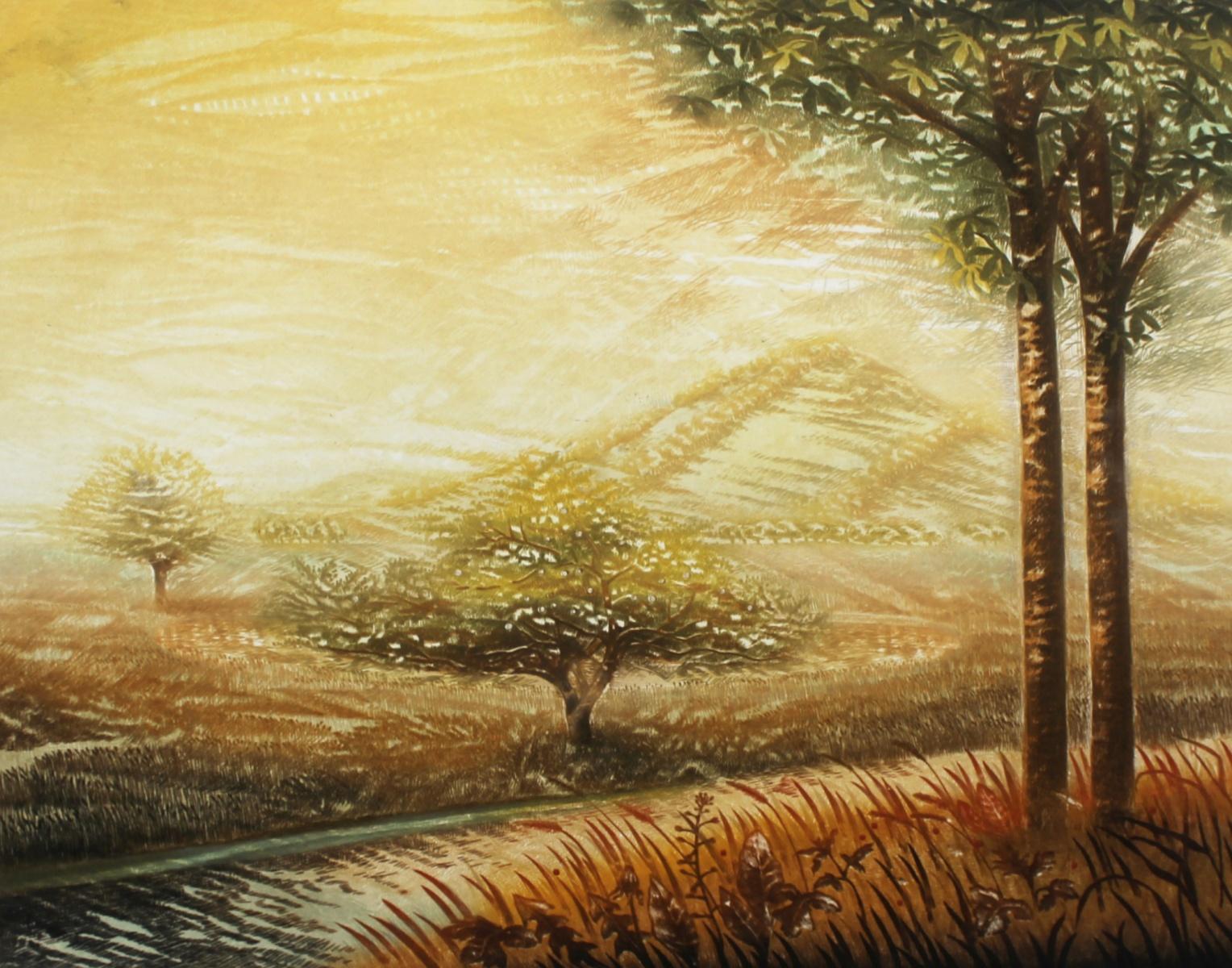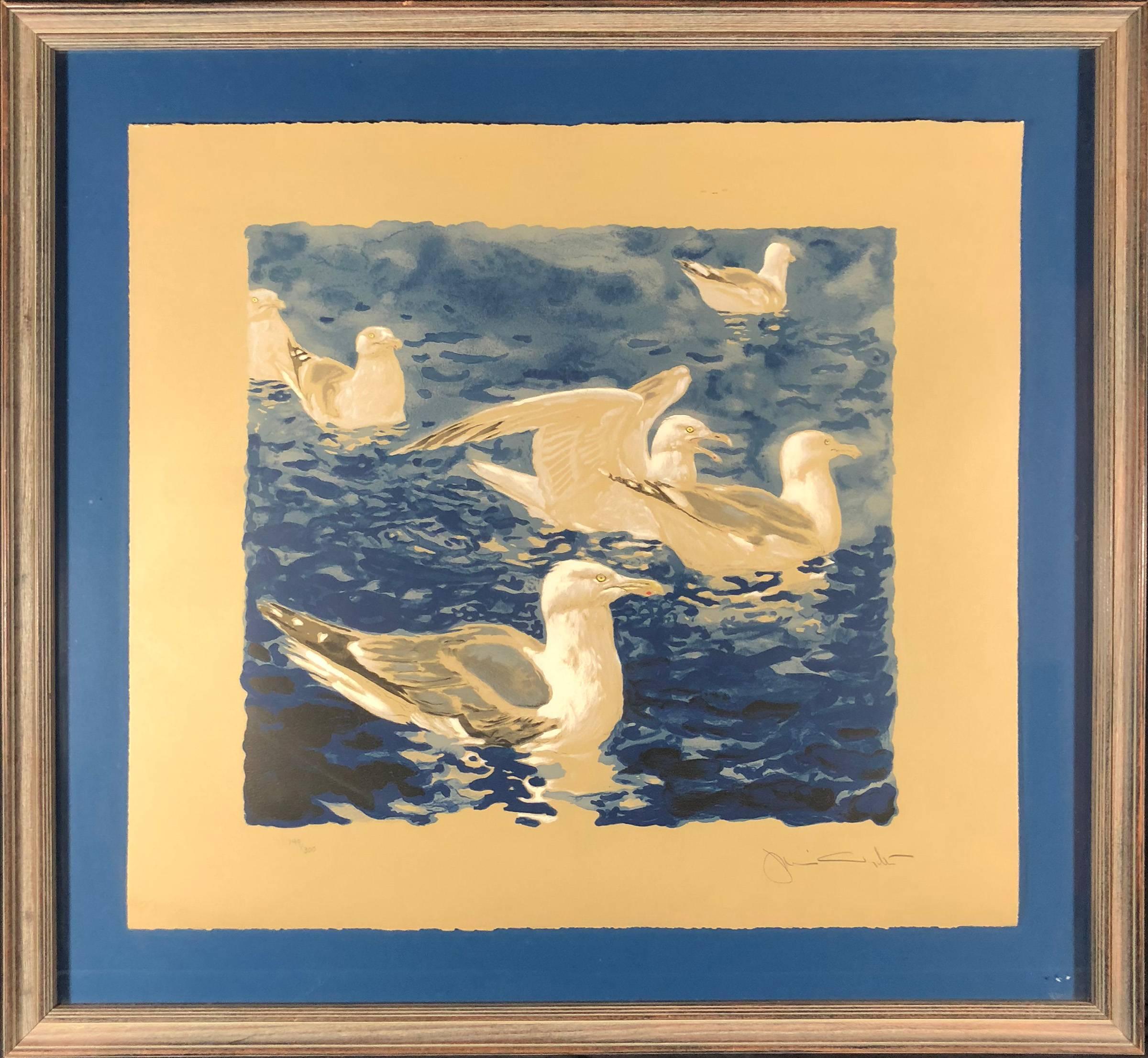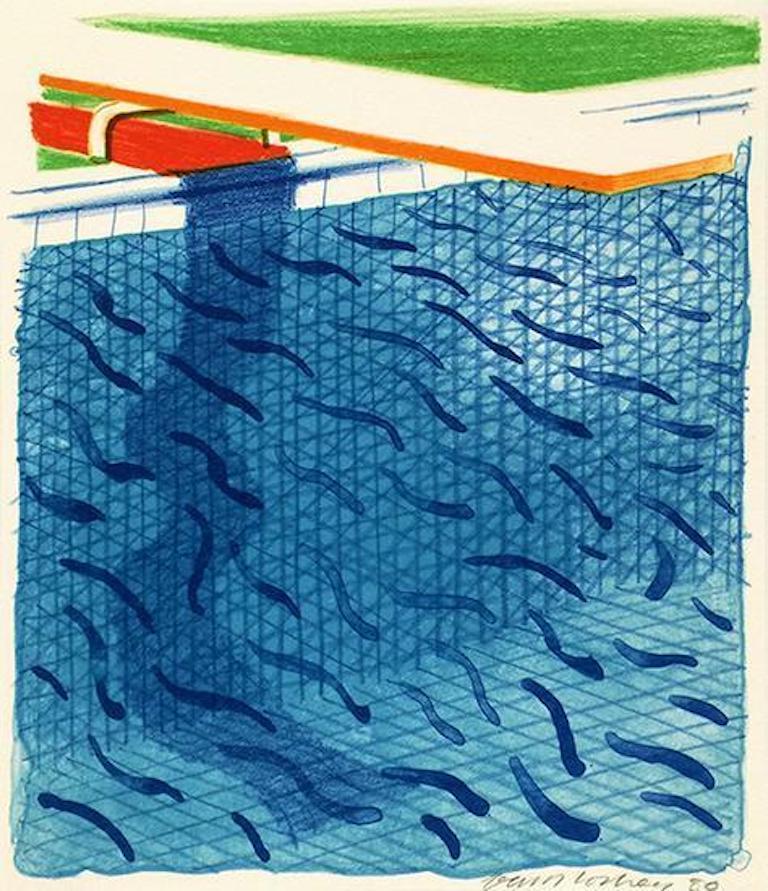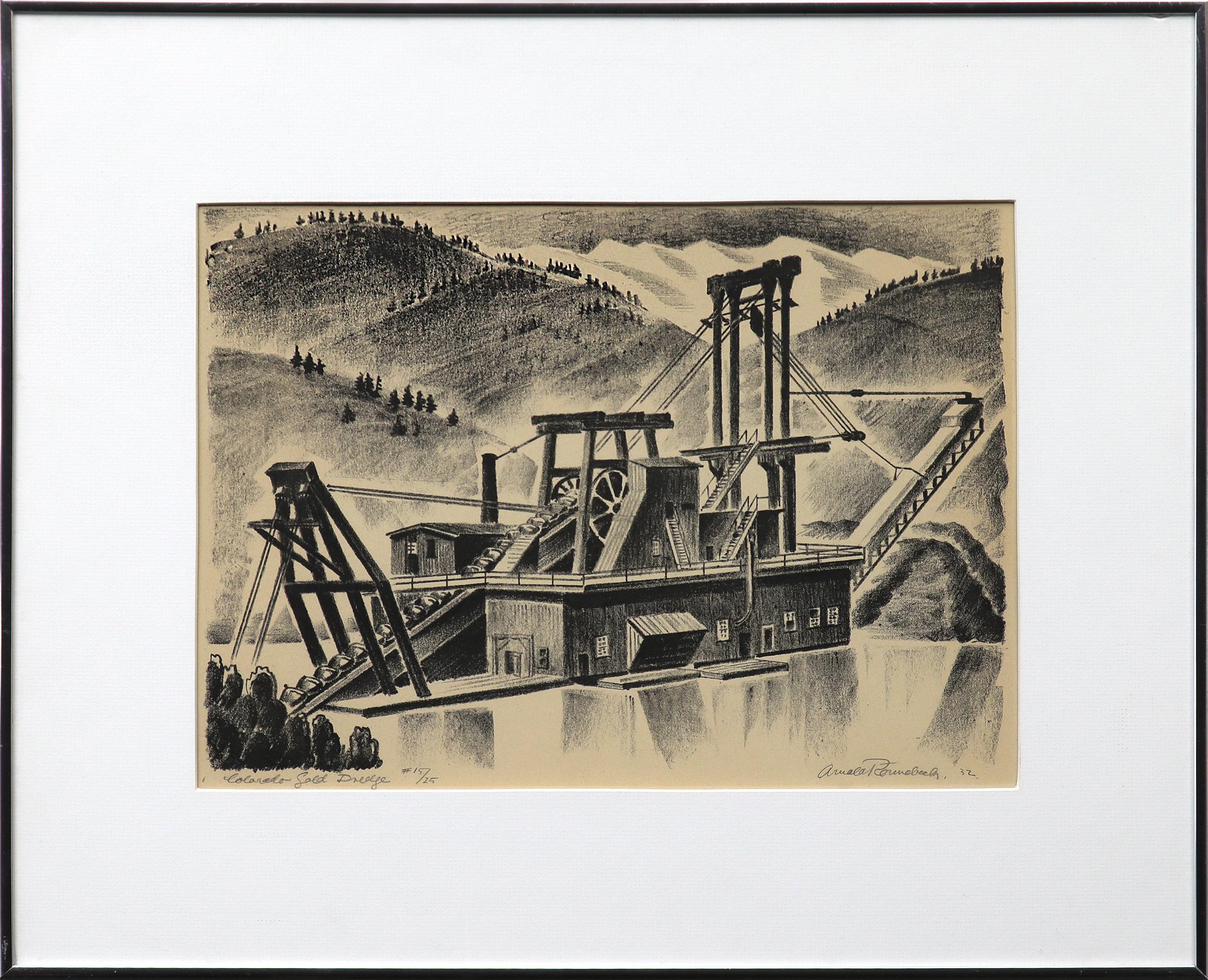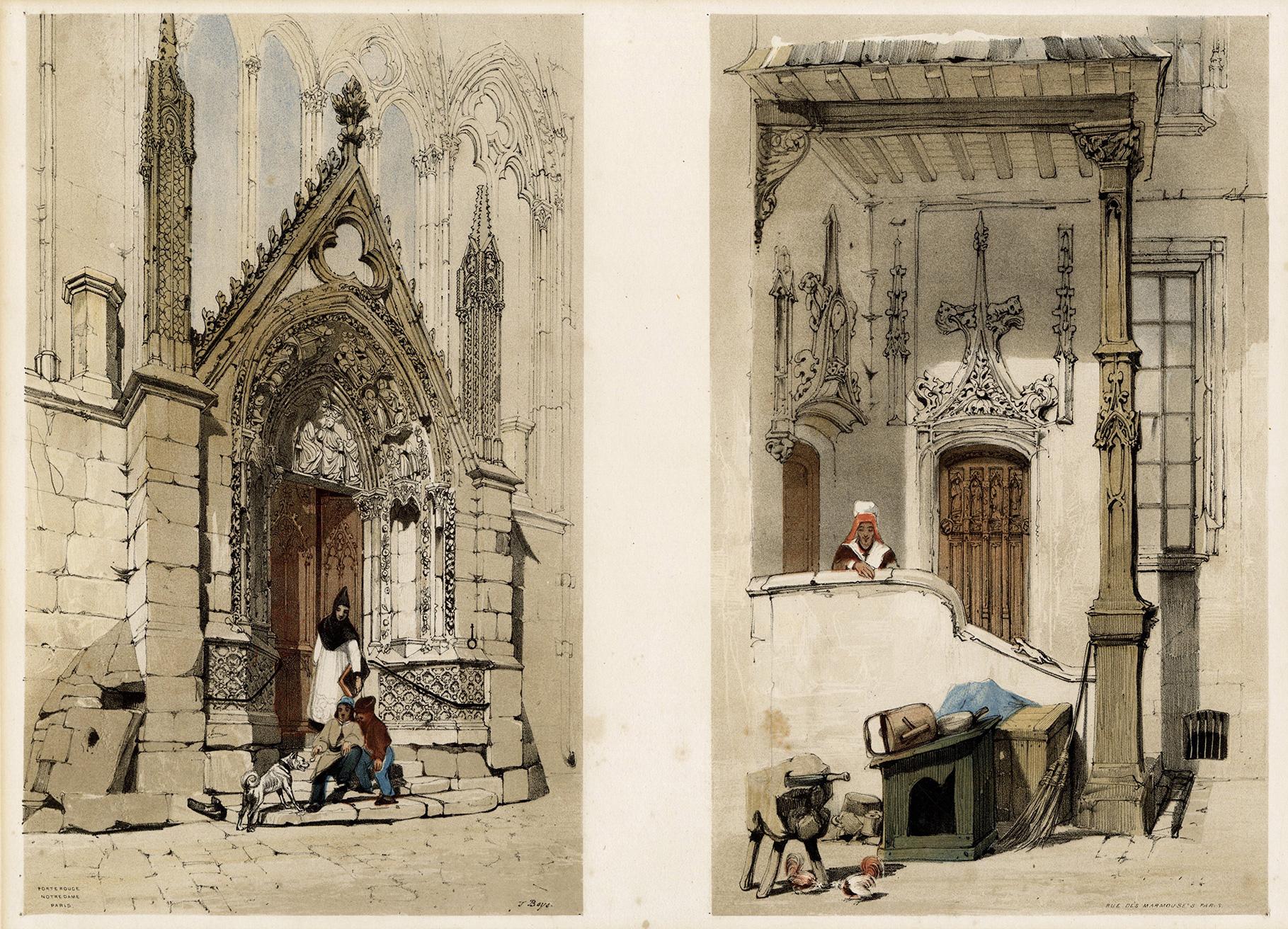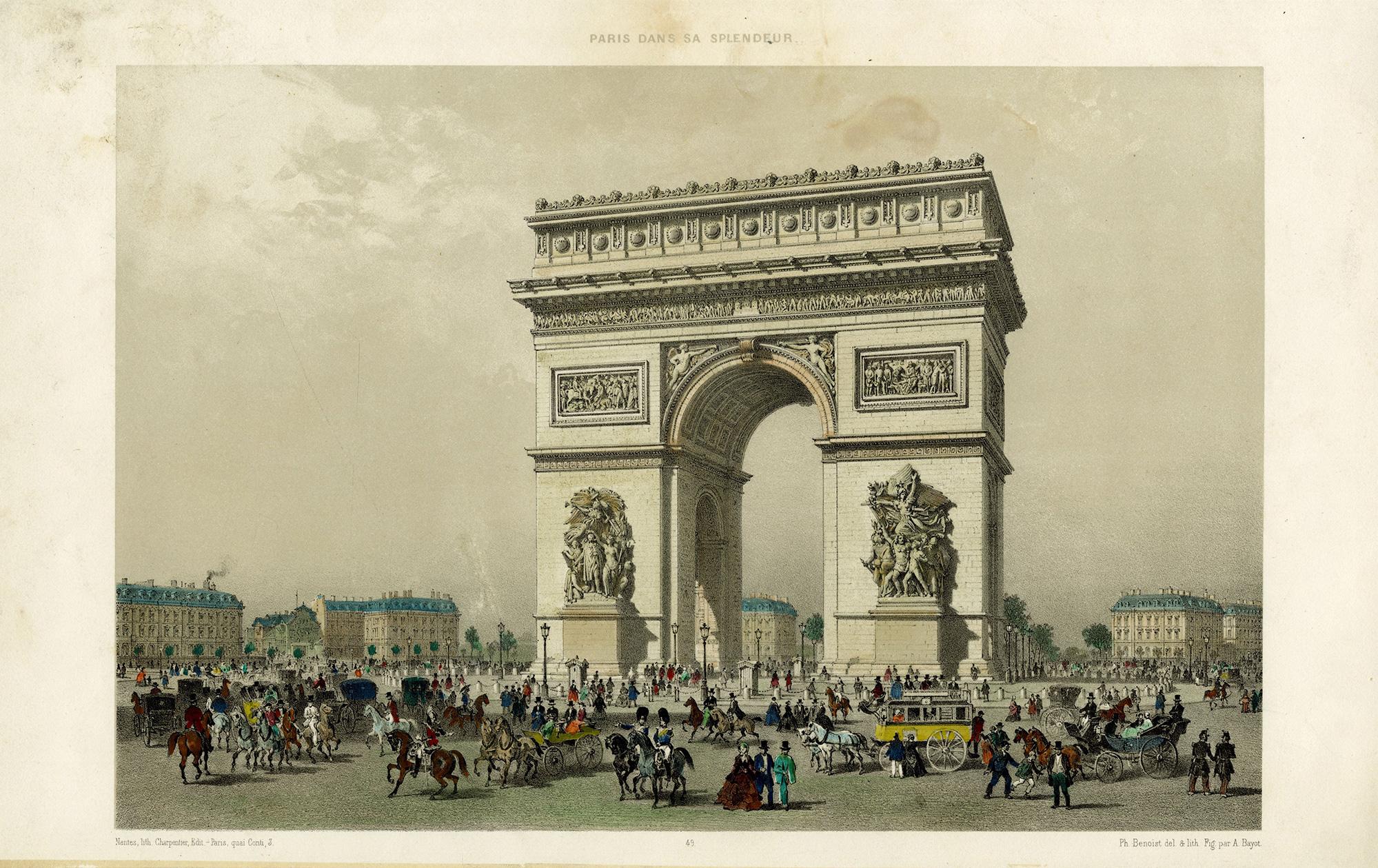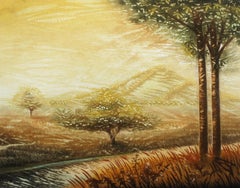
Vintage French Lithograph - French Shipyard
View Similar Items
Want more images or videos?
Request additional images or videos from the seller
1 of 5
UnknownVintage French Lithograph - French ShipyardC. 1950
C. 1950
About the Item
- Creation Year:C. 1950
- Dimensions:Height: 24 in (60.96 cm)Width: 0.1 in (2.54 mm)Depth: 18 in (45.72 cm)
- Medium:
- Period:
- Condition:
- Gallery Location:Houston, TX
- Reference Number:Seller: 8573D1stDibs: LU1042358712

About the Seller
5.0
Platinum Seller
These expertly vetted sellers are 1stDibs' most experienced sellers and are rated highest by our customers.
Established in 2001
1stDibs seller since 2015
1,027 sales on 1stDibs
More From This SellerView All
- Vintage French Lithograph - Village SceneBy Andre TrostLocated in Houston, TXVintage French lithograph of a rustic stone building and stairway with a figure in the shade of an alcove by artist Andre Trost, circa 1960....Category
1960s Landscape Prints
MaterialsInk, Paper, Lithograph
- French Lithograph - Quai MalaquaisBy René Eugene LairyLocated in Houston, TXWarmly hued fine art color lithograph of the city skyline of the Paris Quai Malaquais by French artist René Eugene Lairy, circa 1960. Titled, signed ...Category
1960s Landscape Prints
MaterialsPaper, Ink, Lithograph
$260 Sale Price20% Off - Sailboat LandscapeLocated in Houston, TXFrench lithograph of flowered field with sailboats in background, circa 1960. Original artwork on paper displayed on a white mat with a gold border. Mat fits a standard-size frame...Category
1960s Landscape Prints
MaterialsLithograph
- Beached SailboatsBy Jean-Claude QuiliciLocated in Houston, TXFrench lithograph of boats at low tide by artist Jean Claude Quilici, circa 1960. Signed lower right. 37/175 Original artwork on paper displayed ...Category
1960s Landscape Prints
MaterialsLithograph
$395 Sale Price21% Off - French Lithograph - Multiple Toned Yellow Sunflower FieldLocated in Houston, TXLively French lithograph of sunflower field with multiple tones of yellows, orange, red, and while sunflowers, circa 1960. Original artwork on paper ...Category
1960s Landscape Prints
MaterialsLithograph
- Etching - Regal RemainsLocated in Houston, TXCrisp black and white etching of an imposing arch towering from the remains of an old city by M. Ledda, circa 1920. Signed lower right. Original artwork on paper displayed on a whi...Category
1920s Landscape Prints
MaterialsEtching, Ink, Paper
You May Also Like
- La domaine des murmures. L`après-midi d`été.Located in Warsaw, PLLandscape print by Suzanne PirotteCategory
21st Century and Contemporary Other Art Style Figurative Prints
MaterialsPaper, Lithograph
- Before the Trotting Race - Original Lithograph Handsigned NumberedBy Yves BrayerLocated in Paris, FRYves Brayer (1907-1990) Before the Trotting Race Original lithograph, c.1973 Handsigned in pencil by the artist Numbered /250 copies Size 50 x 65 cm, on Arches Vellum Information: ...Category
1970s Landscape Prints
MaterialsVellum, Lithograph
- Herring GullsBy Jamie WyethLocated in Missouri, MOJamie Wyeth "Herring Gulls" 1978 Color Lithograph Signed Lower Right Numbered Lower Left 149/300 Born in 1946, James Browning Wyeth came of age when the meaning of patriotism was clouded by the traumas of the Vietnam War and the scandals of Watergate. Working in an era of turmoil and questioning of governmental authority, he did art that encompassed both marching off to war and marching in protest. One of James's early masterworks, Draft Age (1965) depicts a childhood friend as a defiant Vietnam-era teenager resplendent in dark sunglasses and black leather jacket in a suitably insouciant pose. Two years later Wyeth painstakingly composed a haunting, posthumous Portrait of President John F. Kennedy (1967) that seems to catch the martyred Chief Executive in a moment of agonized indecision. As Wyeth Center curator Lauren Raye Smith points out, Wyeth "did not deify the slain president, [but] on the contrary made him seem almost too human." Based on hours of study and sketching of JFK's brothers Robert and Edward - documented by insightful studies in the exhibition - the final, pensive portrait seemed too realistic to family members and friends. "His brother Robert," writes Smith in the exhibition catalogue, "reportedly felt uneasy about this depiction, and said it reminded him of the President during the Bay of Pigs invasion." In spite of these misgivings, James's JFK likeness has been reproduced frequently and is one of the highlights of this show. The poignancy, appeal and perceptiveness of this portrait, painted when the youngest Wyeth was 21 years old, makes one wish he would do more portraits of important public figures. James himself feels he is at his best painting people he knows well, as exemplified by his vibrant Portrait of Jean Kennedy Smith (1972), which captures the vitality of the slain President's handsome sister. He did paint a portrait of Jimmy Carter for the January 1977 man-of-the-year cover of Time magazine, showing the casually dressed President-elect as a straightforward character posed under a flag-draped water tower next to the family peanut plant in Plains, Ga. James recalls that Carter had one Secret Service agent guarding him as he posed outdoors, a far cry from the protection our Chief Executives require today. As a participating artist in the "Eyewitness to Space" program organized by the National Aeronautics and Space Administration in collaboration with the National Gallery of Art in the late 1960s, Wyeth deftly recorded in a series of watercolors his eyewitness observations of dramatic spacecraft launchings and more mundane scenes associated with the space program. Commissioned by Harper's Magazine to cover the 1974 congressional hearings and trials of Watergate figures, James Wyeth executed a series of perceptive and now evocative sketches that recall those dark chapters in our history. Memorable images include a scowling John Ehrlichman, a hollow-eyed Bob Haldeman, an owlish Charles Colson, a focused Congressman Peter Rodino, a grim visaged Father/ Congressman Robert Drinan, and vignettes of the press and various courtroom activities. An 11-by-14-inch pencil sketch of the unflappable Judge John Sirica is especially well done. These "images are powerful as historical records," observes Smith, "and as lyrically journalistic impressions of events that changed the nation forever." Wyeth's sketch of early-morning crowds lined up outside the Supreme Court building hoping to hear the Watergate case, with the ubiquitous TV cameramen looking on, is reminiscent of recent scenes as the high court grappled with the Bush-Gore contest. The Wyeth family penchant for whimsy and enigmatic images is evident in Islanders (1990), showing two of James's friends, wearing goofy hats, sitting on the porch of a small Monhegan Island (Me.) cottage draped with a large American flag. Mixing the serious symbolism of Old Glory with the irreverent appearance of the two men, James has created a puzzling but interesting composition. Painting White House...Category
1970s American Modern Animal Prints
MaterialsPaper, Lithograph
Price Upon Request - Pool Made With Paper and Blue Ink for BookBy David HockneyLocated in New York, NY1980 Lithograph in colors on Arches Cover paper Sheet: 10 1/2 x 9 in. Edition of 1000 Signed, dated and numbered in pencil, lower margin Framed, excellent conditionCategory
1980s Pop Art Landscape Prints
MaterialsPaper, Lithograph
Price Upon Request - PALM DOOR (3D HAND PAINTED MULTIPLE)By Patrick HughesLocated in Aventura, FLHand-painted 3D multiple with lithography. Hand signed and numbered by Patrick Hughes. Published by Flowers Gallery, London. Edition 25/35. Plexi box presentation box included. Size 20 x 24.75 x 8.25 inches. Artwork is in excellent condition. Certificate of authenticity included. All reasonable offers will be considered. About the Artist: Patrick Hughes is a British artist known for his invention of a unique optical illusion he calls the “reverspective.” In these three-dimensional relief paintings, objects that appear closest to the viewer, are in fact, the furthest away in physical space. Playing with perspective and distance and challenging the viewer’s understanding of vision. “When the principles of perspective are reversed and solidified into sculpted paintings, something extraordinary happens,” the artist has said of his work. “The mind is deceived into believing the impossible, that a static painting can move of its own accord.” Born Peter David Hughes on October 20, 1939 in Birmingham, United Kingdom, the painter created Sticking-out Room—his first reverspective—in 1964 after studying at the Leeds Day Training College. On the day of his graduation, he had his first exhibition at the Portal Gallery...Category
1990s Contemporary Figurative Prints
MaterialsLithograph, Paper
- House at Gregory Point (Colorado), 1930s Black and White Landscape LithographBy Arnold RönnebeckLocated in Denver, COOriginal Arnold Ronnebeck (1885-1947) lithograph of a home in Gregory Point, near Central City, Colorado from the 1930s. Edition of 25 printed. Presented in a custom frame, outer dimensions measure 23 ¼ x 18 ½ inches. Image size is 19 ¼ x 13 ¼ inches Print is clean and in very good vintage condition - please contact us for a detailed condition report. Provenance: Estate of Arnold Ronnebeck Expedited and international shipping is available - please contact us for a quote. About the Artist: Modernist sculptor, lithographer and museum administrator, Rönnebeck was a noted member of European and American avant-garde circles in the early twentieth century before settling in Denver, Colorado, in 1926. After studying architecture at the Royal Art School in Berlin for two years beginning in 1905, he moved to Paris in 1908 to study sculpture with Aristide Maillol and Émile-Antoine Bourdelle. While there he met and befriended American modernist painter, Marsden Hartley, of whom he sculpted a bronze head that was exhibited at the Salon d’Automne in Paris in 1912 and the following year at Hartley’s solo show of paintings at Alfred Stieglitz’s Gallery 291 in New York. A frequent guest of Gertrude Stein’s Saturday "evenings" in Paris, she described Rönnebeck as "charming and always invited to dinner," along with Pablo Picasso, Mabel Dodge (Luhan) and Charles Demuth. After the outbreak of World War I in 1914, Rönnebeck returned to Germany where he served as an officer in the German Imperial Army on the front lines. Twice wounded, including in the Battle of Marne in France, Kaiser Wilhelm II awarded him the Iron Cross. During the war Hartley fell in love with Rönnebeck’s cousin, Lieutenant Karl von Freyburg, who was killed in combat. As a tribute to Freyburg, Hartley created Portrait of a German Officer (1914) now in the Metropolitan Museum of Art in New York. After the war Rönnebeck traveled in Italy with German writer, Max Sidow, and German poet, Theodor Daubler, doing a series of drawings of Positano and the Amalfi Coast that formed the basis for his lithographs on the subject. The death of his finacée, the young American opera singer Alice Miriam in 1922 and his own family’s increasing financial problems in post-World War I Germany led him to immigrate to the United States in 1923. After living briefly with Miriam’s family in Washington, DC, he moved to New York where he became part of the avant-garde circle around Alfred Stieglitz. His essay, "Through the Eyes of a European Sculptor," appeared in the catalog for the Anderson Gallery exhibition, "Alfred Stieglitz Presents Seven Americans: 159 Paintings, Photographs & Things, Recent & Never Publicly Shown, by Arthur G. Dove, Marsden Hartley, John Marin, Charles Demuth, Paul Strand, Georgia O’Keeffe, Alfred Stieglitz." In New York Rönnebeck began producing Precisionist-style lithographs of the city’s urban landscapes which he termed "living cubism." Some of them were reproduced in Vanity Fair magazine. Through Stieglitz he met Erhard Weyhe head of the Weyhe Gallery who, with its director Carl Zigrosser, arranged Rönnebeck’s first solo American exhibition in May 1925 at the gallery in New York. Comprising some sixty works – prints, drawings and sculpture – the show subsequently traveled on a thirteen-month tour of major American cities. Until the end of his life, the gallery represented him, along with other American artists Adolf Dehn, Wanda Gag, Rockwell Kent, J.J. Lankes, Louis Lozowick, Reginald Marsh and John Sloan. In the summer of 1925, as the guest of Mabel Dodge Luhan, Rönnebeck first saw Taos, New Mexico, which Marsden Hartley had encouraged him to visit. It was there that he met his future wife, Louise Emerson, an easel painter and muralist. A year later they were married in New York before relocating to Denver. He served as director of the Denver Art Museum from 1926 to 1930 where he invited Marsden Hartley to lecture on Cézanne’s art in 1928. Rönnebeck fostered the development of the museum’s collection of American Indian art and the curation of modernist art exhibitions. In addition to his work at the museum, he was professor of sculpture at the University of Denver’s College of Fine and Applied Arts from 1929 to 1935, and wrote a weekly art column in the Rocky Mountain News. His best known Denver sculptures from the late 1920s in bronze, copper, stone, wood and terra cotta include a reredos, The Epiphany, at St. Martin’s Chapel; The History of Money (six panels) at the Denver National Bank; The Ascension at the Church of Ascension; and the William V. Hodges Family Memorial at Fairmount Cemetery. At the same time he did a series of terra cotta relief panels for La Fonda Hotel in Santa Fe, New Mexico. In the 1930s his bas-relief aluminum friezes of stylized Pueblo and Hopi Indian Kachina masks...Category
1930s American Modern Landscape Prints
MaterialsPaper, Lithograph
